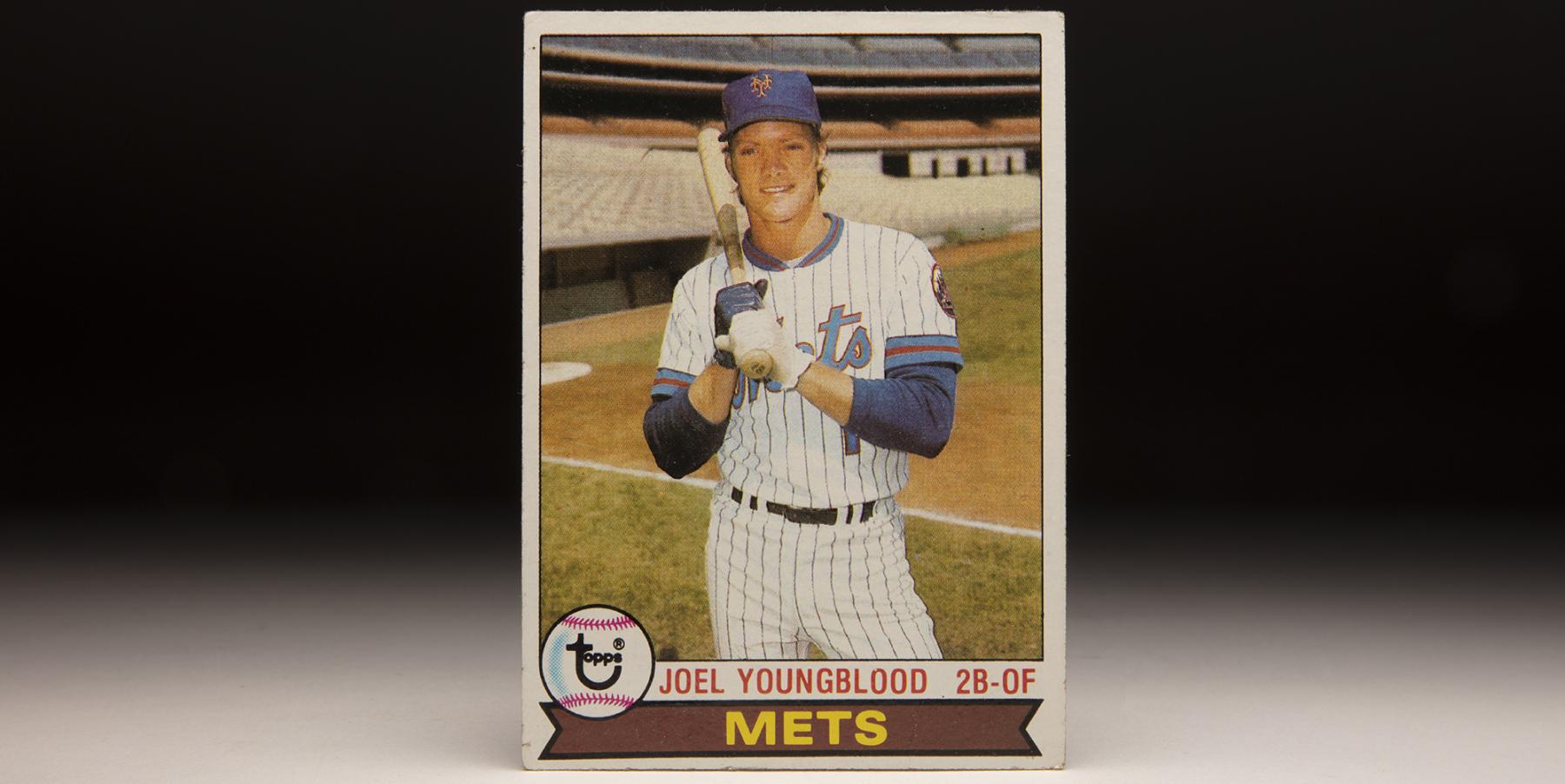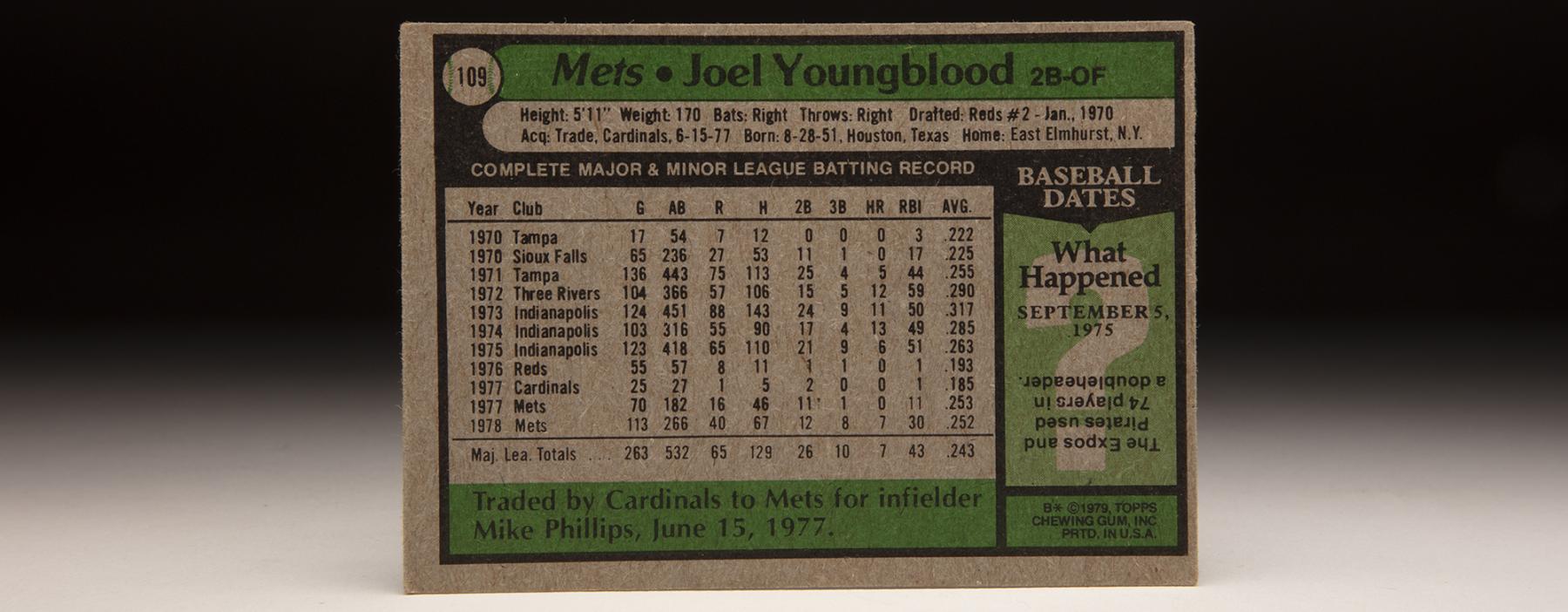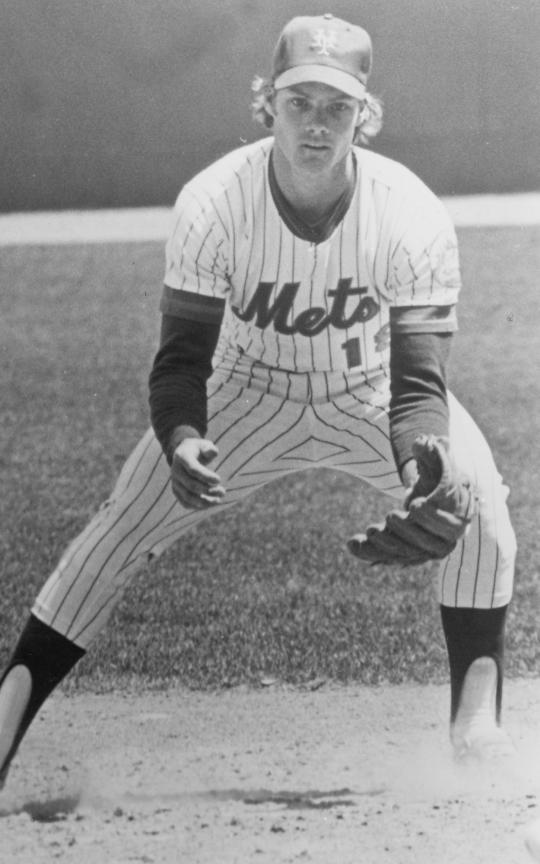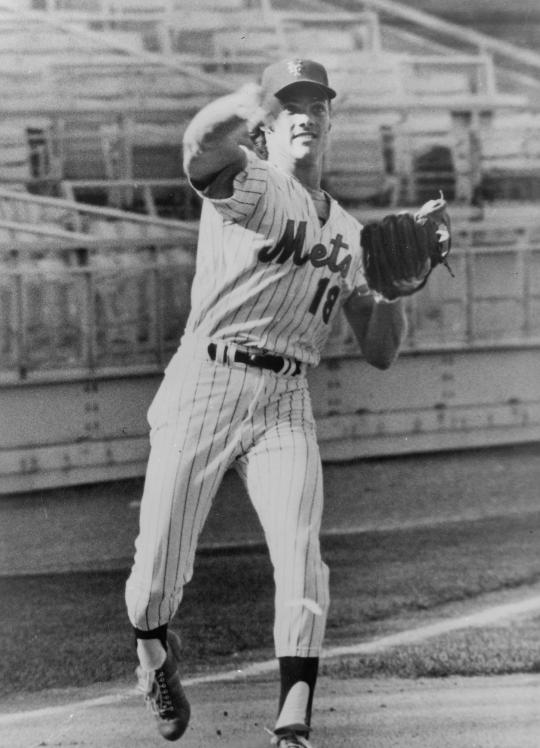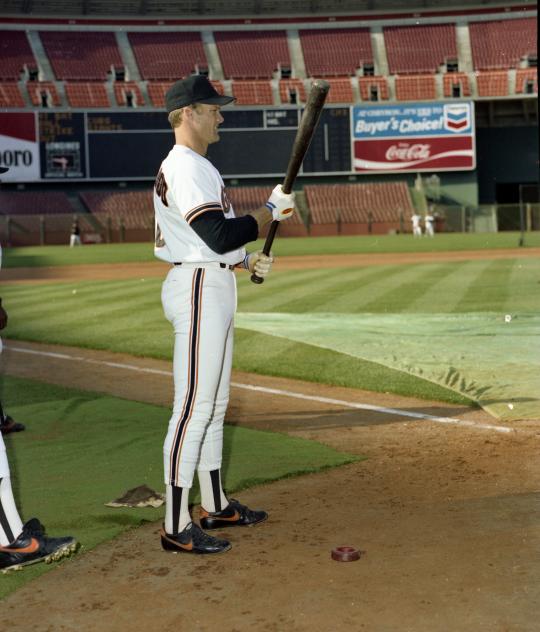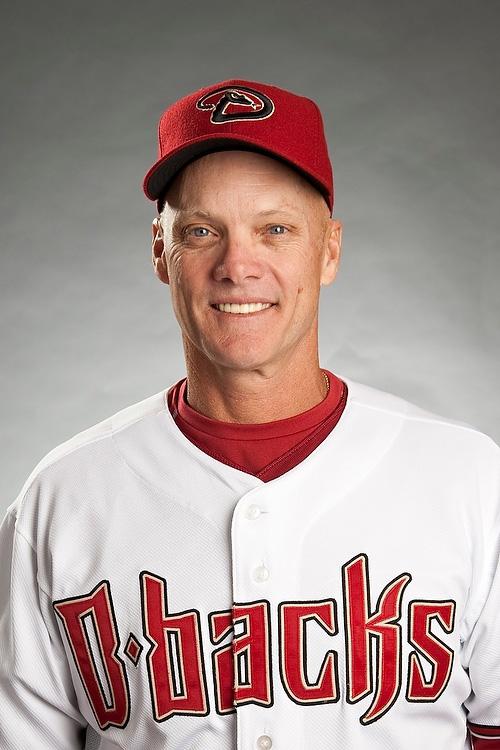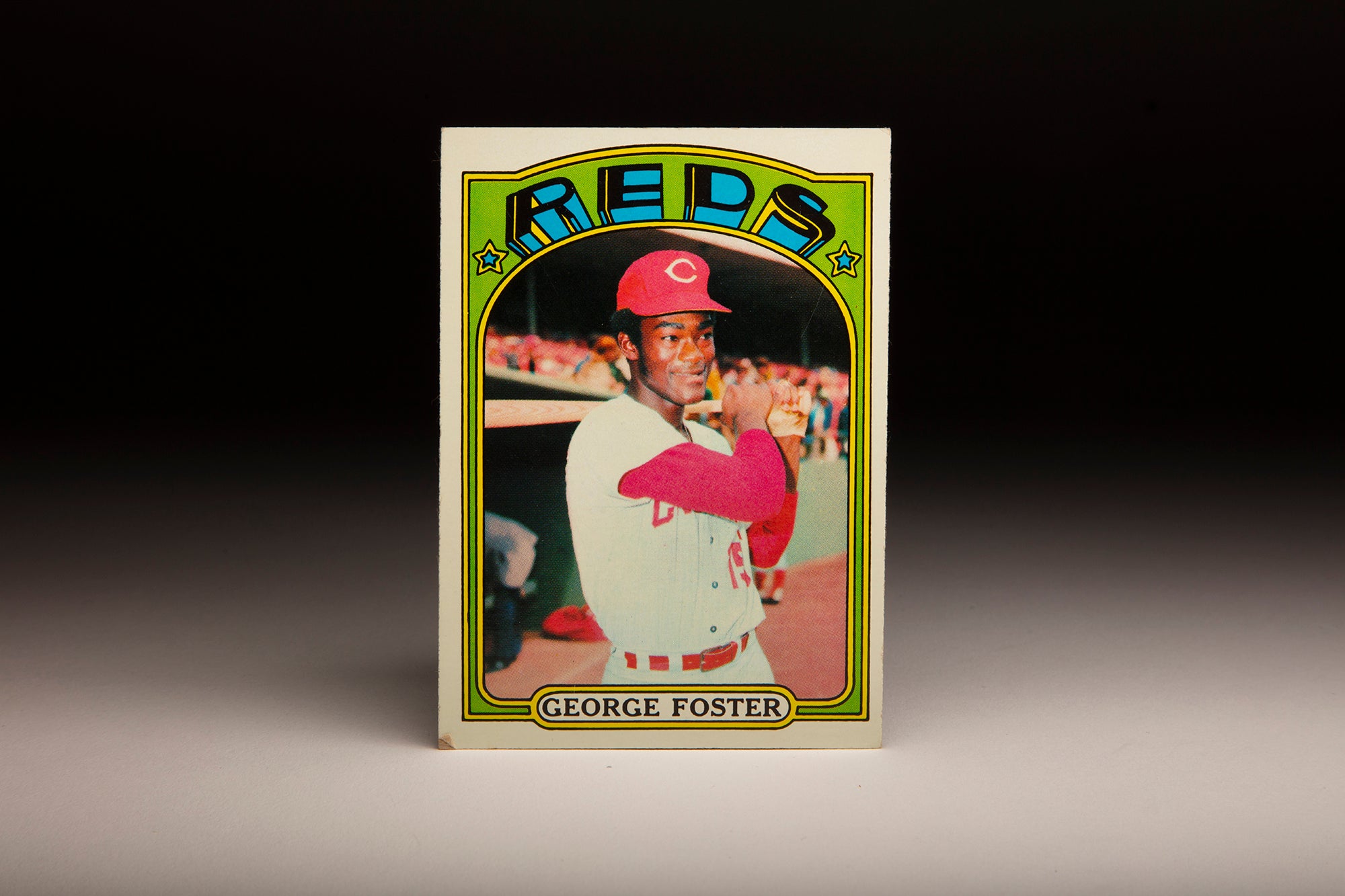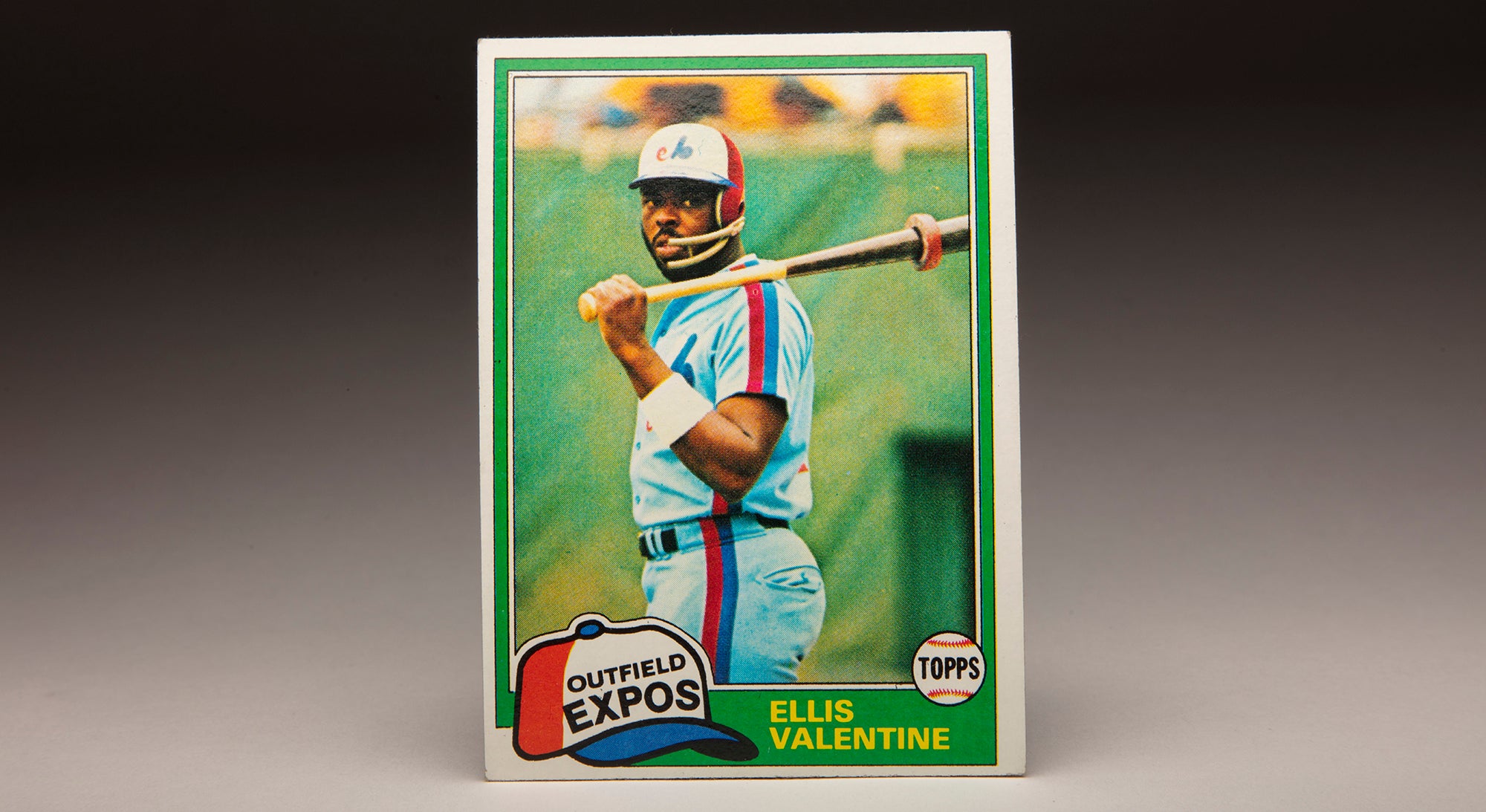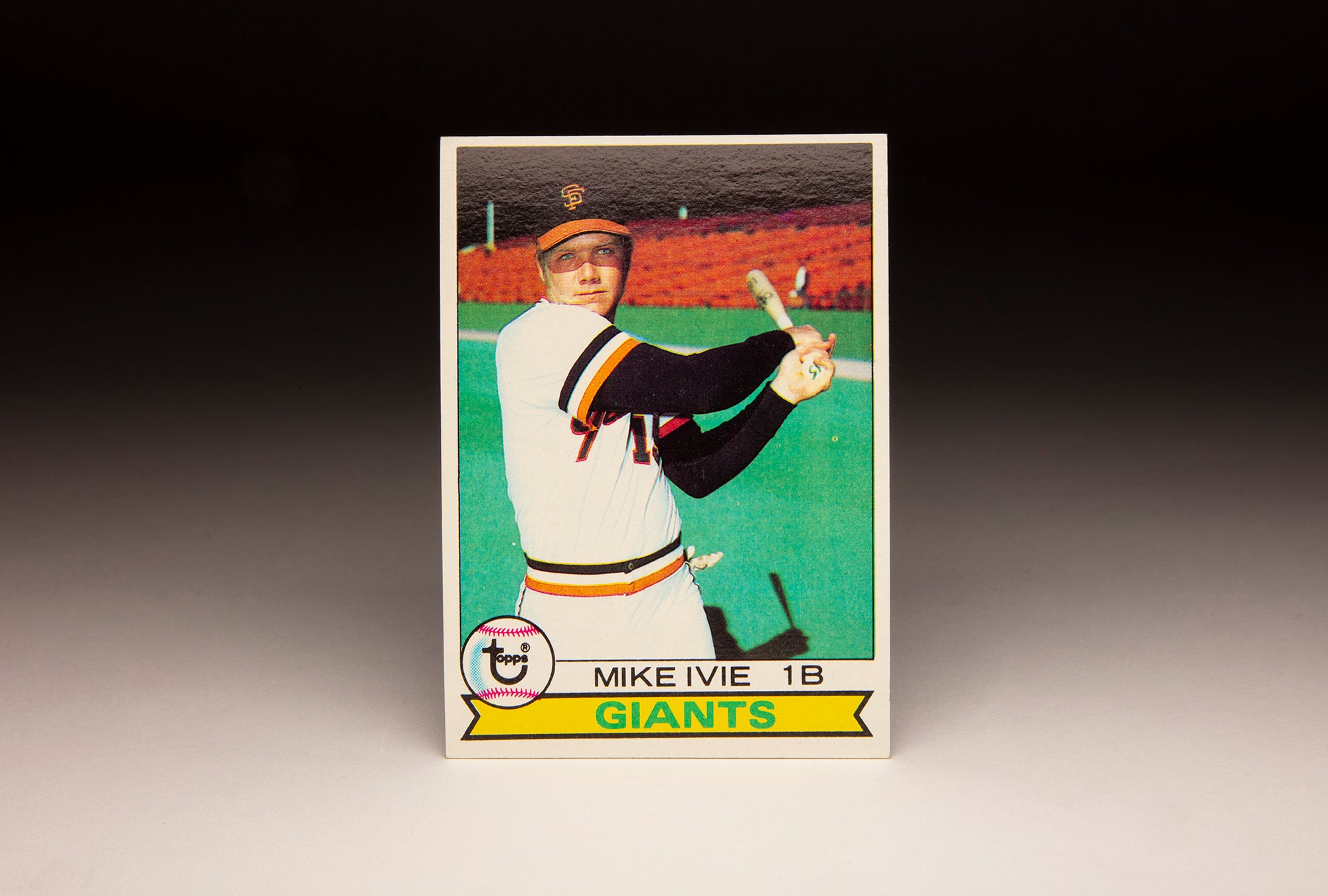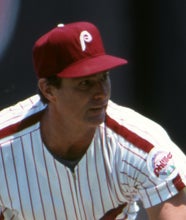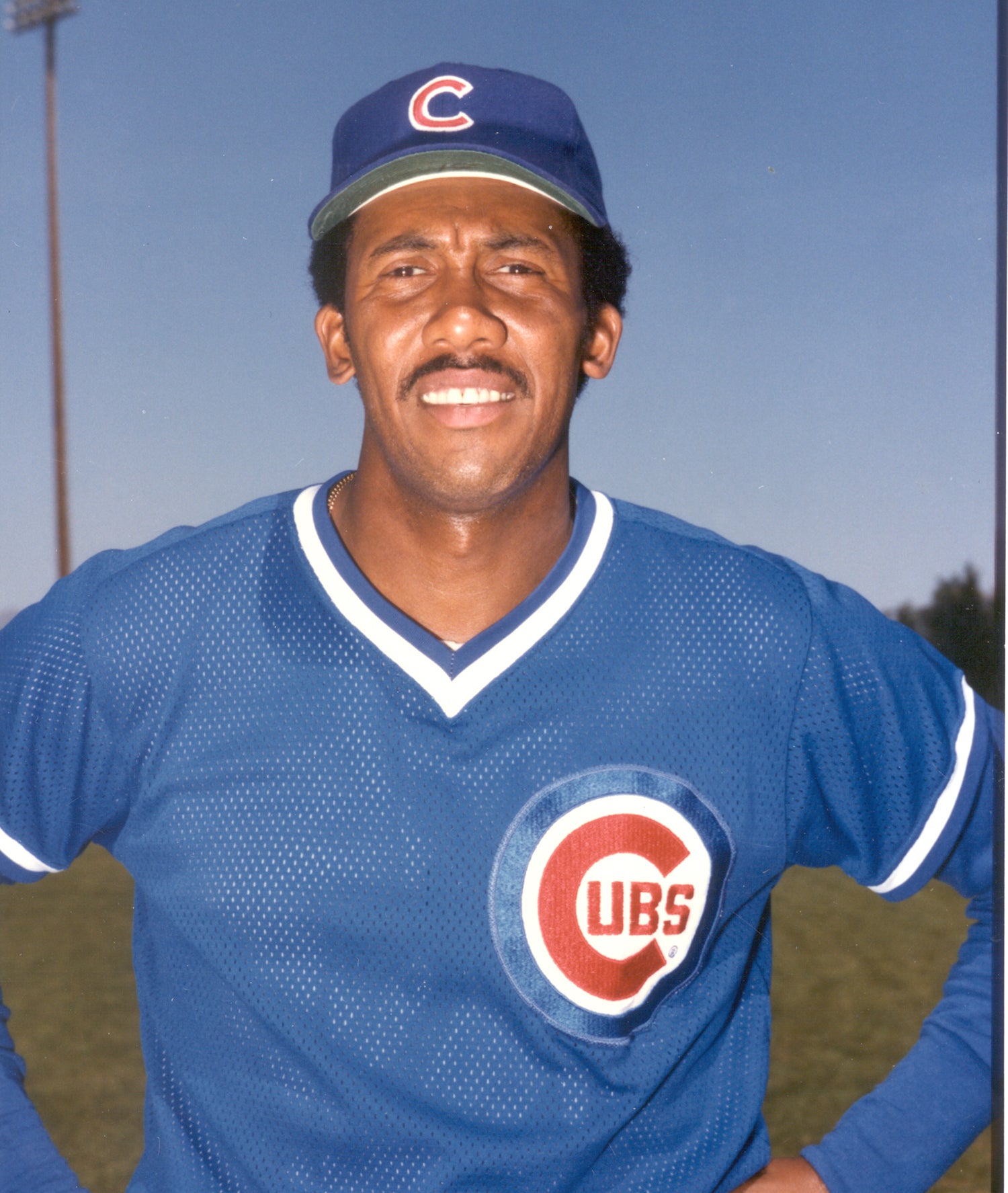- Home
- Our Stories
- #CardCorner: 1979 Topps Joel Youngblood
#CardCorner: 1979 Topps Joel Youngblood
He owns a record that could ostensibly be tied but likely never topped, so Joel Youngblood will forever be linked to a classic trivia question.
The only player in baseball history to record hits for two different teams on the same day, Youngblood fashioned a career that featured much more than that one moment. Over 14 big league seasons, the versatile Texan often found himself at the center of the baseball universe.
Born Aug, 28, 1951, in Houston, Youngblood came from a Cherokee heritage from both his maternal and paternal families. Drafted by the Reds as a catcher in the second round of the January 1970 MLB Draft out of Houston’s Stephen F. Austin High School, Youngblood signed and reported to the Sioux Falls Packers of the Class A Northern League. He hit .225 in 65 games before earning a late-season promotion to Tampa of the Florida State League.
With a young Johnny Bench already having a National League Most Valuable Player Award on his shelf, the Reds moved Youngblood from behind the plate to the infield. In 1971, Youngblood spent the entire season with Tampa, hitting .255 with 67 walks, 25 doubles and 75 runs scored over 136 games spent mostly at third base.
In 1972, Youngblood was promoted to Double-A Trois-Rivieres of the Eastern League, where he hit .290 with 12 homers and 60 RBI in 104 games at third base and the outfield. It marked the third straight season where Youngblood endured a serious facial injury. He lost his front teeth to a ground ball in 1970, a foul ball broke his nose in 1971 and an errant pitch shattered his cheekbone with Trois-Rivieres.
Then in 1973, Youngblood made the jump to Triple-A Indianapolis – where he would remain for three full seasons while earning a reputation as one of the game’s top prospects.
But with an incredibly deep roster at the big league level, Cincinnati felt no need to rush any of their young players.
“Nobody likes to come back a third year,” Youngblood told the Indianapolis News during the 1975 season. “But I had no choice. I tried to keep a positive attitude.
“I had a lot of hard feelings. I’d like to have been with Cincinnati. I keep my wishes up that someday I’m going to make it.”
Youngblood hit .317 with 88 runs scored and 21 stolen bases for Indianapolis in 1973 while playing outfield, shortstop and third base. That versatility got him noticed by Reds manager Sparky Anderson in the spring of 1974.
“If it weren’t for the fact that Joel can play both the outfield and the infield, I wouldn’t say he had any chance to make the club,” Anderson told the Cincinnati Post, “because normally you want to see a kid his age and with his potential playing on a club where he’ll be a regular.
“If Youngblood shows he can play the outfield and third, he could really give us some sock in the lineup against left-handed pitching. And he could give us more overall speed.”
But Youngblood was sent back to Triple-A in 1974, where he hit .285 with 13 homers and 49 RBI in only 103 games after suffering a wrist injury following a hit-by-pitch. Then in 1975, Youngblood hit .263 with 18 steals in 123 games for Indianapolis as the Reds won the World Series title.
Now out of minor league options, Youngblood knew his chance was at hand.
“I’ll play with somebody (in the majors in 1976),” Youngblood said. “I’m going to be fully prepared to make one of those young outfielders up there (with the Reds) worry. They got their chance and then I’ll get my chance and I’m going to get one of their positions.”
Breaking camp with the Reds as Cincinnati set out to repeat as World Series champions in 1976, Youngblood appeared in his first big league game on April 13 – scoring a run after pinch running for Bob Bailey. Youngblood started his first game on April 26, going 4-for-5 as the Reds’ right fielder in a 10-9 loss to Philadelphia.
He would finish the season batting .193 in 55 games, and while he was active for the World Series against the Yankees, he did not appear in a game as Cincinnati swept New York in four games.
With the Reds again facing a roster crunch heading into the 1977 season, Youngblood was shipped to the Cardinals on March 28 in exchange for pitching prospect Bill Caudill.
“Most of my friends are on the Reds,” Youngblood told the St. Louis Post-Dispatch 48 hours after the trade. “I think things will be OK after I’ve talked with my wife and we get things settled down. I had a hard time sleeping last night.”
Youngblood was expected to fill a utility role with the Cardinals but appeared mostly as a pinch hitter or pinch runner until June 15, when he was traded to the Mets in a deal for infielder Mike Phillips. On that same day, the Mets sent Tom Seaver to the Reds in exchange for four prospects.
Appearing in his first game for the Mets on June 24 at third base, Youngblood became the 57th player in the Mets’ 16 seasons to play in a game at third. But most of Youngblood’s time in New York that season was spent at second base and in the outfield, and he finished the year with a .244 batting average in 95 games with the Cardinals and Mets.
Again slotted for utility duty in 1978, Youngblood hit .252 in 113 games. Then in 1979, the Mets pitted Youngblood against Elliott Maddox in a competition for the right field job. Maddox won the battle but suffered an early-season foot injury that gave Youngblood a chance to play.
By the end of April, Youngblood was hitting .350 – and Mets manager Joe Torre kept Youngblood in right field for most of May and June before moving him to left field for the final two months of the season. Youngblood finished the season hitting .275 with 16 homers, 60 RBI, 37 doubles, 90 runs scored and 18 steals in 158 games.
“Last year (1978) was the first year I really felt comfortable playing,” Youngblood told the Springfield News-Sun.
Youngblood remained comfortable in 1980, signing a new three-year contract worth a reported $1 million in March.
“The contract puts me in a category I think I belong in,” Youngblood told the New York Daily News. “I am now making what some other outfielders are making. I thought I was underpaid last year (when he made $72,000).”
Youngblood began Spring Training as the heir apparent in center field for the Mets but quickly moved back to right field, hitting .276 with eight homers and 69 RBI in 146 games. Then in 1981, Youngblood parlayed a hot May into an All-Star Game berth. He was hitting .359 when the strike interrupted the season in June. But in his fourth game after the season resumed, Youngblood aggravated a left knee injury and he was removed from an Aug. 14 game against the Phillies. He did not play again that season, finishing the year with a .350 batting average in 43 games.
“I think I will be a more productive player playing one position,” Youngblood told the Daily News in 1980. “I will play other positions if they need me. One of my abilities is my versatility, but I think I am more valuable to the team (at one position).”
In 1982, Youngblood began the season as the Opening Day right fielder. But with the Mets’ roster featuring newly-acquired George Foster along with Ellis Valentine, Youngblood once again became a utility option.
On Aug. 4, 1982, Youngblood’s name was splashed across sports pages from coast to coast. His third inning single off Fergie Jenkins plated two runs against the Cubs at Wrigley Field, but in the bottom of the fourth Youngblood was replaced by Mookie Wilson in center field. He was called out of the dugout and told to report to Mets general manager Frank Cashen, who told Youngblood he had been traded to the Expos in exchange for a player to be named later who became pitcher Tom Gorman.
Youngblood was instructed to hop on a plane and head to Philadelphia, where the Expos were playing the Phillies. He headed for the hotel and then to the airport – but forgot one piece of equipment along the way.
“At the hotel I realized I had left my glove in the dugout, so I went back to the ballpark to get it,” Youngblood told AP. “I made the plane with 20 minutes to spare.”
Arriving in the third inning of the Montreal vs. Philadelphia game, Youngblood entered the contest in the sixth as a defensive replacement for Jerry White in right field. In the top of the seventh, Youngblood singled against Steve Carlton – becoming the first player to record hits for two different teams on the same day.
While that record could someday be matched, it seems unlikely that it would be done against two future Hall of Fame pitchers like Youngblood did.
Appearing in his first game for the Mets on June 24 at third base, Youngblood became the 57th player in the Mets’ 16 seasons to play in a game at third. But most of Youngblood’s time in New York that season was spent at second base and in the outfield, and he finished the year with a .244 batting average in 95 games with the Cardinals and Mets.
Again slotted for utility duty in 1978, Youngblood hit .252 in 113 games. Then in 1979, the Mets pitted Youngblood against Elliott Maddox in a competition for the right field job. Maddox won the battle but suffered an early-season foot injury that gave Youngblood a chance to play.
“I feel the team needs me,” Youngblood said. “I could have come tomorrow but I wanted to be here as soon as possible.
“Your whole attitude changes when you’re traded to a contender. I feel confidence in myself again. It’s time I started playing up to my ability because this team wants me.”
Youngblood appeared in 40 games down the stretch with the Expos, who finished six games behind the Cardinals in the NL East. With his contract now expired, Youngblood was now a free agent after hitting .240 with three homers and 29 RBI over 120 games with the New York and Montreal.
On Feb. 7, 1983, Youngblood signed a three-year deal with the Giants worth a reported $1 million – virtually the same deal he signed with the Mets in 1980.
“With the versatility of a Youngblood, we could find Jack Clark at first (base) and move Youngblood to the outfield,” Giants general manager Tom Haller told the Oakland Tribune. “Or we could keep Clark in the outfield and have Youngblood at first. Youngblood could even help out at third and will definitely give competition for a starting outfield position.”
In the end, Youngblood appeared in 64 of his 124 games at second base, hitting a career-high 17 home runs to go along with 20 doubles, 53 RBI and a .292 batting average. Then in 1984, the Giants made Youngblood their starting third baseman – and he hit .254 with 10 homers and 51 RBI in 134 games. But in the field, Youngblood made 37 errors – 36 coming at third base – to lead all players in that category.
It would be his final season as a big league regular, but Youngblood’s versatility kept him in the majors for another five seasons.
The Giants hit rock bottom in 1985, going 62-100 as Youngblood hit .270 over 95 games as a reserve outfielder.
“I think there has to be a major shake-up on this team,” Youngblood told McClatchy News Service during that season. “I have never been in a situation like this before. There’s no way we should be like this.”
Following the season, the Giants offered Youngblood a two-year deal worth $450,000 per season. But Youngblood balked at the clause the Giants inserted into the contract allowing for random drug testing. Youngblood eventually signed the contract and then filed a grievance, and an arbitrator ruled that the Giants – who had tried to prevent Youngblood from signing – had to honor the deal.
“All I can say is that I’m glad to be playing baseball again,” Youngblood told the AP about the deal which also included a club option year for 1988. “That’s all I’ve been thinking about the last five months.”
Youngblood played every position except pitcher, catcher and center field in 1986, hitting .255 in 97 games while serving as a valuable pinch hitter. Under new manager Roger Craig – who took over late in the 1985 season – the Giants won 83 games with a young roster that included Candy Maldonado, Will Clark and Chili Davis.
Then in 1987, San Francisco won the NL West with a 90-72 record while Youngblood – appearing mostly as a pinch hitter with 14 hits in 44 at-bats – batted .253 over 98 plate appearances in 69 games. A broken right wrist, however – suffered while trying to catch a foul ball – sidelined Youngblood late in the season and denied him a chance to appear in the NLCS vs. the Cardinals.
Youngblood spent his time during the postseason writing columns for the San Francisco Examiner while taking in the series from the Giants’ bench.
“These Giants are fun to watch,” Youngblood wrote, “but even more fun to play for.”
The Giants declined Youngblood’s option following the 1987 season but quickly brought him back on a new one-year deal worth $320,000. Off the bench once again in 1988, Youngblood hit .252 in 139 plate appearances over 83 games.
His last big league season would come in 1989 with the Reds, hitting .212 as a reserve.
Youngblood tried to hook on the Astros in the spring of 1990 but did not make the team. He played in the Senior Professional Baseball Association during the winter of 1990-91 before the league folded, effectively ending his career on the field.
“There have been a lot of times when I thought I wasn’t wanted,” Youngblood told AP in the spring of 1990. “But baseball is still fun for me and I think I can still contribute and play well.”
Youngblood coached for several big league teams in the 1990s, managed the Kane County Cougars – the Orioles Class A team – in 1992. After working out of baseball in the computer industry for a few years, Youngblood returned to baseball with the Diamondbacks, serving as a minor league instructor before joining the big league club as a third base coach in 2010.
Youngblood finished his 14-year playing career with a .265 batting average, including 969 hits over 1,408 games. He played every position except pitcher in the majors.
“From a manager’s standpoint, I gave him an insurance policy on the bench that could go in and play anywhere,” Youngblood told the Daily News in 2009. “But it took away some of the opportunities for me to play regularly at one position because I was so valuable. I could play all positions quite well.”
Craig Muder is the director of communications for the National Baseball Hall of Fame and Museum

